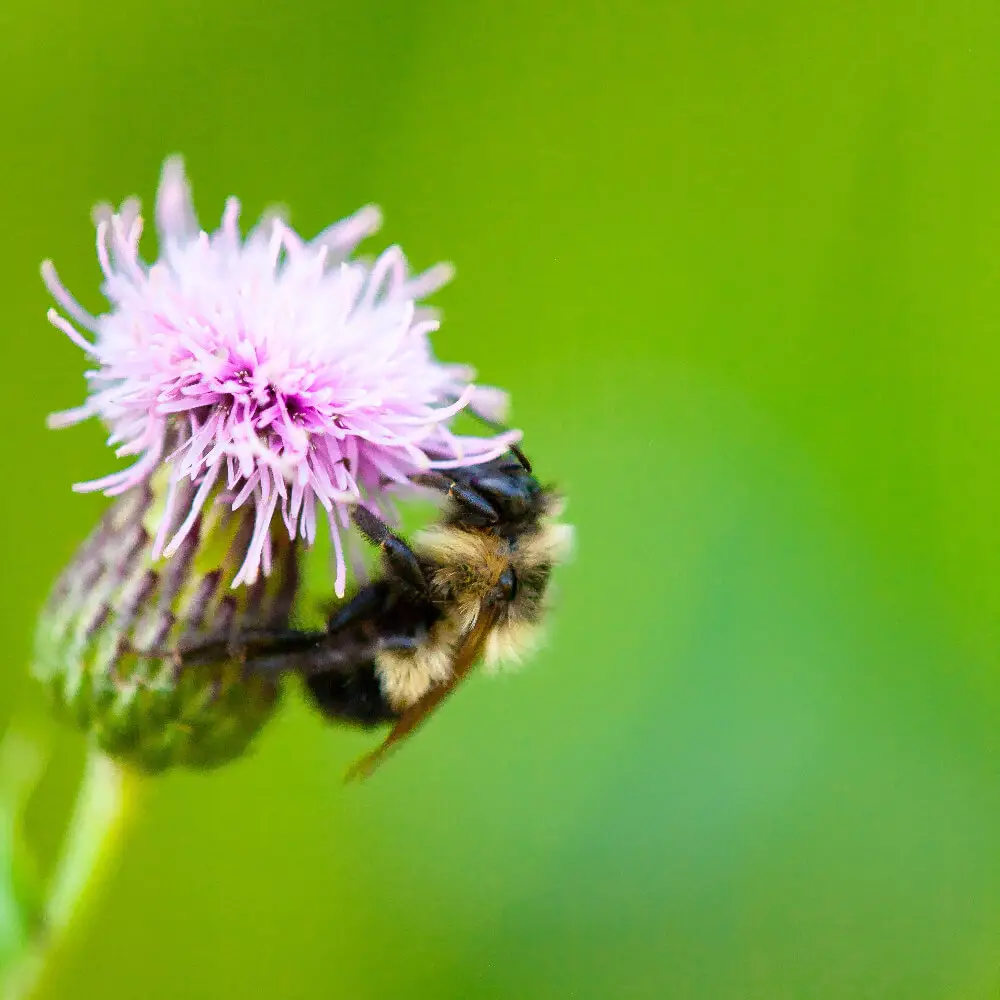Last updated on January 3rd, 2024 at 03:31 pm
Buzz pollination might be a new term for you, but if you’ve relished blueberries, cranberries, or peppers, you’ve indirectly benefited from it. These delicious crops owe their fruiting to the diligent work of wild bumblebees and other buzz pollinators.
Buzz pollination, also known as sonication, is a unique and fascinating method of pollination that some bees employ. It’s not just a simple visit to a flower; it’s a full-blown performance.
These bees don’t just assist buzz-pollinated plants. Studies indicate that when wild bumblebees are around, honeybee-managed crops thrive even more.
Yet, as vital as they are to our agriculture, our grasp of buzz pollinators is still budding. Alarmingly, wild bumblebee numbers are plummeting, partly because we’re swapping their natural habitats for gardens and farmlands.
So without any more introduction, let’s delve into the world of buzz pollination and discover which bees in the UK are the rockstars of this technique.
What is Buzz Pollination?
Buzz pollination is a special technique where bees grab onto a flower and rapidly vibrate their flight muscles. This intense vibration causes the flower to release its pollen, which the bee then collects. It’s like the bee is playing a tune on the flower, causing it to “dance” and release its pollen.
Bumblebees embark on a quest for two essential nutrients: nectar, which provides the instant energy boost for their aerial journeys, and pollen, their primary protein source. Many buzz-pollinated blooms specialize in offering just pollen, cleverly concealing it deep within elongated anthers.
Bee Kisses
The bee gently clamps down near the anther’s base, leaving tiny imprints affectionately termed “bee kisses.” She then disconnects her flight muscles from her wings, allowing her to flex them without soaring. This initiates a powerful vibration, a phenomenon experts label as sonication.
These tremors, originating from the bee’s supple frame, resonate through the flower, agitating the concealed pollen within the anthers. With enough buzzing intensity, the pollen erupts, blanketing the bee.
Following this, the bumblebee meticulously grooms, gathering the pollen and blending it with her saliva. This pollen concoction is then stored in pouches on her legs as she continues her floral tour.
Why is Buzz Pollination Important?
- Specialized Pollination: Some plants have evolved to hide their pollen inside tubular anthers, making it inaccessible to many pollinators. Buzzpollination is the key to unlocking this hidden treasure.
- Increased Efficiency: This method ensures that a significant amount of pollen is collected in a short time, making it a highly efficient method for both the bee and the plant.
UK’s Buzz Pollinators
While many bees can perform buzz pollination, not all choose to do so. In the UK, the primary buzz pollinators are:
- Bumblebees (Bombus species): Bumblebees are the most well-known buzz pollinators in the UK. Their robust size and strength make them adept at this technique. Some common species include the Buff-tailed bumblebee (Bombus terrestris) and the Red-tailed bumblebee (Bombus Lapidarius).
- Solitary bees: Some species of solitary bees in the UK also exhibit buzz pollination. However, they’re often overshadowed by the more dominant bumblebees.
Plants Benefiting from Buzz Pollination
Several plants rely on buzz pollination to reproduce. In the UK, these include:
- Tomatoes: Yes, the tomatoes in your salad might owe their existence to a buzz-pollinating bee!
- Peppers: Another staple in many dishes.
- Potatoes: A primary food source for many.
- Aubergines (eggplants): A favourite for many vegetarians and vegans.
| Buzz Pollinating Bee | Primary Plants Pollinated |
|---|---|
| Bumblebees | Tomatoes, Peppers |
| Solitary bees | Potatoes, Aubergines |
Conclusion
Buzz pollination is a testament to the intricate relationships that exist in nature. It’s a dance between the bee and the flower, a mutual exchange that ensures the survival of both. As you enjoy your next tomato salad or roasted aubergine, take a moment to appreciate the bumblebees and solitary bees in the UK that make it all possible. And remember, every bee has a role, and every role is crucial. Let’s do our part to support and protect these buzzing wonders.
Explore our bee ID guide and discover how to identify different bee species.





